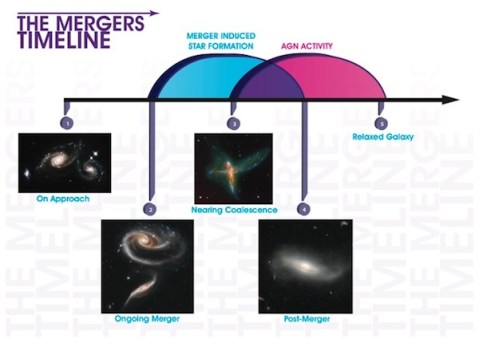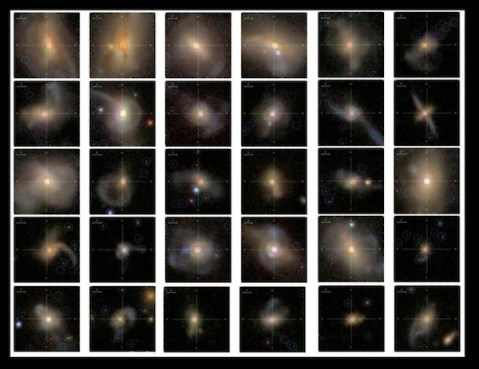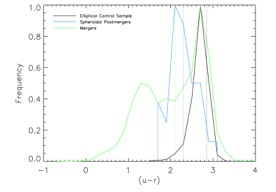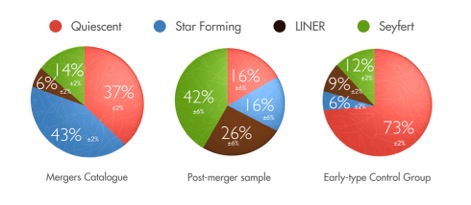Galaxy Crash Debris: Post-merger Spherodials paper now out!
Today’s post is by Alfredo Carpineti, a Ph.D student at Imperial College:
I’m happy to inform you that a paper on the properties of spheroidal post-mergers (SPMs) has been accepted for publication by the Monthly Notices of the Royal Astronomical Society. The arXiv link to the paper is http://arxiv.org/abs/1111.5008.
We are interested in post-mergers because we want to study in the hierarchical model of galaxy evolution and understanding the evolution of galaxies along a merger sequence is necessary to achieve this. We define post-mergers as single-core galaxies with tidal feature or disruption that can only be explained as merger related.

The specific subset we chose are the likely predecessors of elliptical galaxies, and we compared them to the general merger and an elliptical control sample to see how the properties of galaxies evolve along the merger. The SPMs are part of a sample classified by Galaxy Zoo as post-mergers. We looked at this sample again and we picked the ones which look mostly bulge dominated, a key feature of galaxies that are likely to be precursors of elliptical galaxies. You can see in the figure below how, even though these galaxies are similar in morphology to elliptical galaxies, they appear to be in the process of relaxing into relaxed ellipticals.
In our paper we found that the vast majority of the SPMs inhabit low-density environments and that they sit between mergers and ellipticals in colour space, which indicates that the peak of star formation activity takes place during the merger phase. However the AGN fraction peaks in the post-merger phase (compared to the mergers) suggesting that the AGN phase probably becomes dominant only in the very final stages the merging process.
In general the SPMs are very active, with 84% of the galaxies in our sample showing some emission-line activity compared to the 63% of the mergers and the 27% of the relaxed ellipticals. The post-merger phase might be less showy than the merger phase, but it’s clear that the dust is yet to set in these galaxies.
Finally we compared the colours of the SPMs to models in which a young stellar population (with an age of 500 million years) is superimposed on an old population that forms 10 billion years in the past (since the bulk of the stars in elliptical galaxies are known to be old). We found that, under these assumptions, the vast majority of the SPMs are likely to have formed more than 5% of their stellar mass in the recent merger-driven burst. Since ellipticals themselves are rather gas-poor objects, our results indicate that ∼55% of the SPMs are products of major mergers in which at least one of the progenitors is a late-type galaxy.




This is one of the most exciting papers I have ever read. It would be awesome to have a really complete understanding of the nature of galaxies, especially the starburst and active types. It comes as no surprise that coalescence and merger completion stages play host to increased activity from the central SMBH. Brilliant post, brilliant paper.